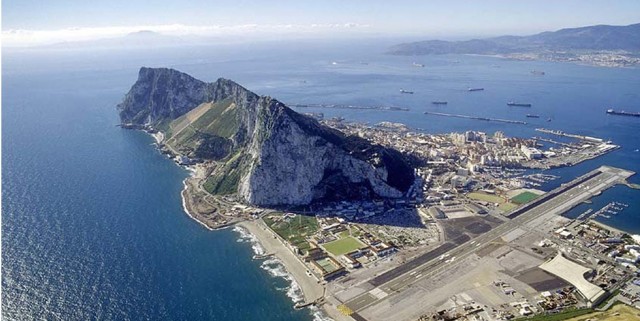Gibraltar
GIBRALTAR IS AN overseas territory of the UNITED KINGDOM. Historically known as one of the Pillars of Hercules, the Rock of Gibraltar has guarded the entrance to the Mediterranean world since the beginning of Western civilization. Held by Great Britain since 1704 (formally since 1713), the peninsula remains one of Britain's last overseas territories, with little indication of change in the near future, despite intense pressure by the Spanish government.
The Rock is situated at the end of a peninsula, 2.8 mi (4.4 km) in length, that juts out into the Alboran Sea (the westernmost extension of the MEDITERRANEAN SEA), terminating in Europa Point. The other “pillar,” Cape Ceuta (or Punta Almina), lies 9 mi (14.5 km) across the Strait of Gibraltar, on the north coast of Africa. To the west are the more protected waters of the Bay of Algeciras, and the man-made Gibraltar Harbor, around which rises the military and administrative community of the colony. The eastern face of the rock is much more perpendicular, as are the northern and southern approaches, underlining the defensive importance of the rock, which itself is composed of dense limestone arranged in thick rock beds. Gibraltar is connected to the mainland of Spain by a narrow isthmus, low and sandy, across which daily migrants travel from the nearby Spanish town of La Linea.

The Rock has been extensively fortified and modified over the centuries, with about 10 mi (16 km) of tunnels, casements for heavy artillery (especially during World War II), a canal cut across the isthmus, and even a narrow landing strip jutting into the Bay of Algeciras on the western side of the peninsula. The naval harbor and dockyard has recently been expanded with a land reclamation project called the Europort, increasing Gibraltar's total land area by 10 percent. Having no flat land of any consequence, Gibraltar must import all of its food needs. The colony's economy depends instead on tourism, offshore banking and finance, and industries related to shipping.
HISTORY OF THE ROCK
The Rock received its present name from Arab conquerors in the 8th century, who named it the Rock of Tariq (gebel al Tariq), after one of their generals, Tariq ibn-Ziyad. It was taken by Spanish forces of the Reconquista in 1462 and fortified by Carlos I (Emperor Charles V) using the most advanced German engineers. Occupied by a combined Anglo-Dutch naval force in 1704, during the War of Spanish Succession, Gibraltar was formally ceded to Britain in 1713. Britain maintained its garrison throughout the 18th century, despite repeated Spanish attacks, notably the famous four-year siege during the American Revolutionary War, and Gibraltar was formally declared a crown colony in 1830. Despite attacks from the air by both German and Italian airplanes in World War II, General Dwight Eisenhower kept his headquarters there during the Allied invasion of North Africa. A referendum in 1967 left no doubt that the colony's residents wished to remain British subjects, as a fully self-governing dependent territory. A scheme for “total shared sovereignty” proposed by the Spanish government received a similar overwhelming “no” in a vote held in 2002.